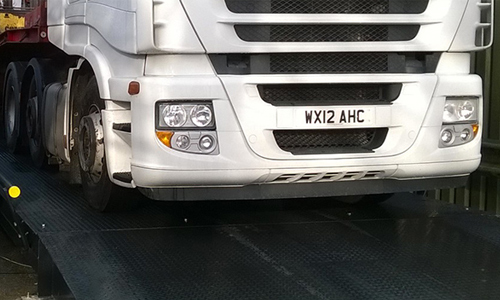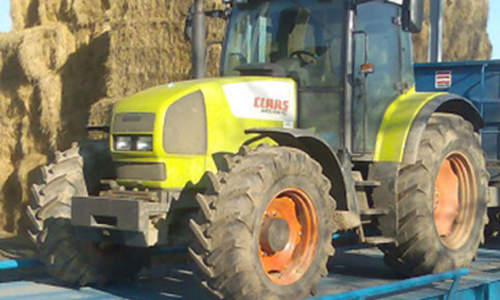What Is A Weighbridge?
-
 By
Solent Scales
By
Solent Scales
- 2 Oct 2021
- 0 Comments

Weighbridges (or ‘truck scales’ as they are known in the US) are purpose built machines dedicated to weighing large industrial vehicles and their contents, usually for commercial purposes. Whilst modern weighbridges feature advanced mechanics such as strain gauge load cells, their origins in the early 1900s saw the inclusion of more rudimentary technology.
Historically, weighbridges were originally designed to be installed over a pit which housed levers and other mechanical components. These allowed for the weighing platform to be connected to a balancing mechanism which was used to ascertain the vehicle’s weight.
However, this construction proved to be limiting due to the separation between the weighbridge platform and its balancing element. Later developments have seen the implementation of load cells into weighbridges, allowing for the creation a wholly self-contained unit.
Furthermore, the transducer portion of a load cell provides a digital readout of the vehicle’s weight which is far more accurate than the now-archaic methods used in the past.
The use of modern machines also affords operators the ability to monitor a weighbridge’s performance from a separate location. Remote operation provides added safety for staff working with weighbridges and also offers flexibility to companies installing them on a more permanent basis.
Weighbridge Software
As a result of many weighbridges moving into the digital era, software packages are now readily available which allow for data to be easily stored, transferred and repurposed.
Software such as Logicweigh can be used to automate many of the processes associated with weighbridge data collection and this increases the efficiency of HGV weighing. This is beneficial not only to the company, but also to the customer, as the overall time spent using the weighbridge (including the issuing of a ticket/receipt) is greatly reduced.
For companies, another advantage to using weighbridge software is its ability to integrate with existing databases. This feature helps in the creation of reports used to identify potential issues as well as to support the creation of financial forecasts and other business projections.
Common Applications
Weighbridges are typically used to identify the weight of industrial vehicles and, simultaneously, the weight of their contents. Many goods are often sold by weight and weighbridges are therefore the ideal solution for performing quick continuous vehicle measurements to record these metrics.
The process of identifying the weight of the on-board product is completed by subtracting a vehicle’s net weight from the gross weight (a figure which is publicly available for most commercial vehicles). If the gross weight is not known, weighbridges can also be used to record this by taking a reading after the product has been removed from the vehicle.
In addition to facilitating the purchase of bulk product, companies can also use weighbridges to avoid the incurrence of financial and legal penalties. If a vehicle has unbalanced axle weight, this can render it unsafe for use on public roads and companies can be issued with fines if they are caught.
Availability
Weighbridges can be installed on most premises that have enough space for one (more information on how much space is required to install a weighbridge can be found here). They can be placed on an entrance, to weigh in-coming and out-going vehicles easily, or they can be placed out of they way. They can be installed both on-ground (surface mount) or installed in a pit flush to the ground (pit mount) for a less intrusive look.









